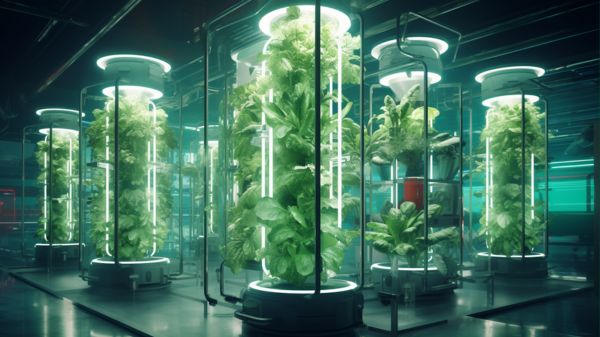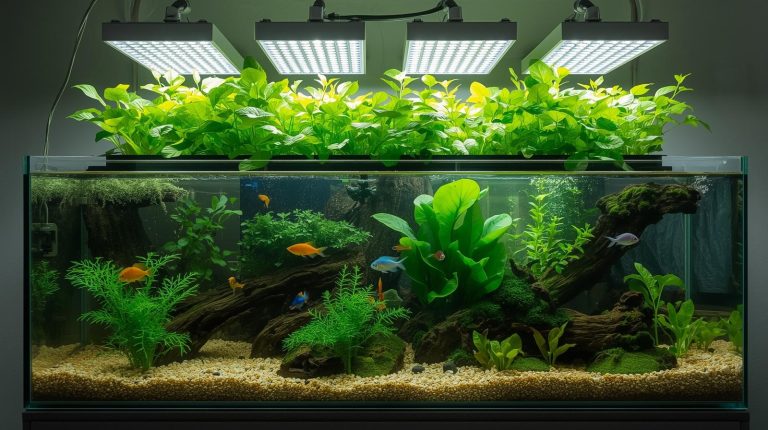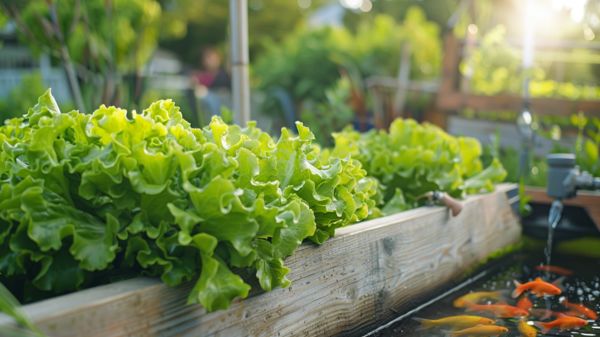Nearly 50% of indoor gardeners agree that routine upkeep is key to their success. When you invest time in regular maintenance of your hydroponics or aquaponics system, you’re not just caring for plants and fish; you’re nurturing a community of living organisms that rely on each other—and on you.
Ensuring water quality doesn’t dip, nutrients are well-balanced, and all system components function correctly means you’re part of a cycle that sustains and enriches life. By checking in on your aquatic friends, monitoring plant health, and keeping the system clean, you help create a thriving ecosystem where every member, including yourself, plays a vital role.
Remember, your commitment to regular maintenance is what keeps this unique garden flourishing.

Importance of Water Quality
Water quality is the cornerstone of your indoor hydroponics or aquaponics system’s health, making regular checks and balances essential for optimal operation.
You’re tasked with ensuring that water levels remain consistent, and the nutrient solution is meticulously balanced. Precise monitoring of pH levels is crucial; they should be within the ideal range for your plants to absorb nutrients efficiently. Ammonia levels, a byproduct of fish waste, demand vigilant oversight. Test strips become your go-to tool for quick assessments, but regular maintenance goes beyond mere testing.
Maintaining water quality involves systematic cleaning to promote clean water and effective water circulation. This is your community, where each element relies on the other, and you’re the guardian of this delicate ecosystem.
Plant Health Monitoring
In addition to water quality, you’ll need to keep a close eye on your plants for signs of nutrient deficiencies or diseases to maintain a thriving system. Regular testing of nutrient concentrations is essential; imbalances can hinder plant growth and lead to sick plants.
You’re part of a community dedicated to sustainability, so understanding the significance of managing pests and diseases proactively is key to your collective success.
Make it a routine to inspect the plants in your aquaponics or hydroponics setup. Pay special attention to plant roots; these are often the first indicators of trouble. It’s also time to clean and remove any dead or dying foliage, which can harbor pests and diseases.
Keeping track of these details ensures the well-being of your indoor garden, fostering a sense of belonging among fellow enthusiasts committed to perfecting the art of soilless cultivation.
System Component Checks
Examine your system’s pumps, lights, and aerators regularly, as these components are crucial for maintaining a balanced environment for your plants and fish. System component checks are an essential part of regular maintenance for both hydroponic and aquaponics systems. The success of your water culture relies heavily on these elements functioning effectively.
- Pumps: Ensure water flows seamlessly from your nutrient reservoir to your grow bed, preventing stagnation and system failure.
- Lights: Verify that your plants are receiving the optimal light spectrum and intensity for vigorous growth.
- Aerators: Confirm that your fish tank receives adequate oxygenation to support aquatic life.
- Grow Bed: Inspect for clogs or media compaction that could impede root expansion.
- System Design: Critique the overall setup to identify any inefficiencies or potential improvements.
Fish Care in Aquaponics
You’ll need to monitor your fish regularly, as their health is a cornerstone of a thriving aquaponics system. Careful selection plays a vital role; choosing the best fish suited to your environment and system size ensures a harmonious balance.
Paying attention to the levels in an aquaponics system, including pH, temperature, and ammonia, is crucial for preventing Fish Diseases. Overcrowding can spike stress and ammonia, sabotaging both fish and plant health. Make any necessary adjustments promptly.
Feed your fish quality fish food as per a consistent schedule to maintain their well-being. Recognize the signs of distress or illness, isolating affected fish to stop disease spread. Regularly clean filters, maintaining water clarity and oxygenation, vital for Fish in an aquaponics system’s survival and efficiency.
Cleaning and Upkeep Schedules
Before diving into specifics, let’s establish a clear schedule for cleaning and upkeep to ensure your hydroponics or aquaponics system operates at peak efficiency. As part of our community, you understand that regular maintenance isn’t just routine; it’s a commitment to the health of your fish and plants.
Embrace these key tasks:
- Weekly: Inspect and clean filters to keep your system clear of debris.
- Biweekly: Apply hydrogen peroxide treatments to oxygenate water and control pathogens.
- Monthly: Thoroughly clean grow beds, reducing the amount of detritus affecting water quality.
- Quarterly: Check and recalibrate all system sensors and plumbing.
- Annually: Replace critical components that are prone to wear and tear.
Focus on these techniques used in cleaning and upkeep schedules to maintain the delicate balance within your hydroponic or aquaponics system.
Conclusion
You must prioritize regular maintenance to sustain your indoor hydroponics or aquaponics systems. Diligent water quality management, plant health inspections, and system component checks are crucial. Don’t overlook the well-being of fish in aquaponics; they’re integral to the ecosystem’s balance.
Establish and adhere to cleaning and upkeep schedules to prevent system failure and ensure longevity. Remember, consistent maintenance isn’t just a routine—it’s an investment in your system’s productivity and efficiency.




